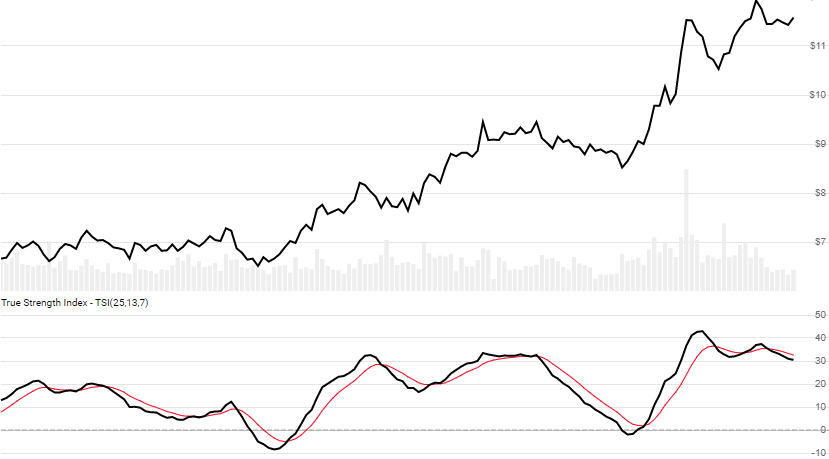True Strength Index (TSI)
Created by William Blau, the True Strength Index is a momentum oscillator that uses a series of exponential moving averages to depicts trends in price changes. [Discuss] 💬

// C# usage syntax
IEnumerable<TsiResult> results =
quotes.GetTsi(lookbackPeriods, smoothPeriods, signalPeriods);
Parameters
lookbackPeriods int - Number of periods (N) for the first EMA. Must be greater than 0. Default is 25.
smoothPeriods int - Number of periods (M) for the second smoothing. Must be greater than 0. Default is 13.
signalPeriods int - Number of periods (S) in the TSI moving average. Must be greater than or equal to 0. Default is 7.
Historical quotes requirements
You must have at least N+M+100 periods of quotes to cover the warmup and convergence periods. Since this uses a two EMA smoothing techniques, we recommend you use at least N+M+250 data points prior to the intended usage date for better precision.
quotes is a collection of generic TQuote historical price quotes. It should have a consistent frequency (day, hour, minute, etc). See the Guide for more information.
Response
IEnumerable<TsiResult>
- This method returns a time series of all available indicator values for the
quotesprovided. - It always returns the same number of elements as there are in the historical quotes.
- It does not return a single incremental indicator value.
- The first
N+M-1periods will havenullvalues since there’s not enough data to calculate. Signalwill benullfor all periods ifsignalPeriods=0.
⚞ Convergence warning: The first
N+M+250periods will have decreasing magnitude, convergence-related precision errors that can be as high as ~5% deviation in indicator values for earlier periods.
TsiResult
Date DateTime - Date from evaluated TQuote
Tsi double - True Strength Index
Signal double - Signal line (EMA of TSI)
Utilities
See Utilities and helpers for more information.
Chaining
This indicator may be generated from any chain-enabled indicator or method.
// example
var results = quotes
.Use(CandlePart.HL2)
.GetTsi(..);
Results can be further processed on Tsi with additional chain-enabled indicators.
// example
var results = quotes
.GetTsi(..)
.GetSlope(..);